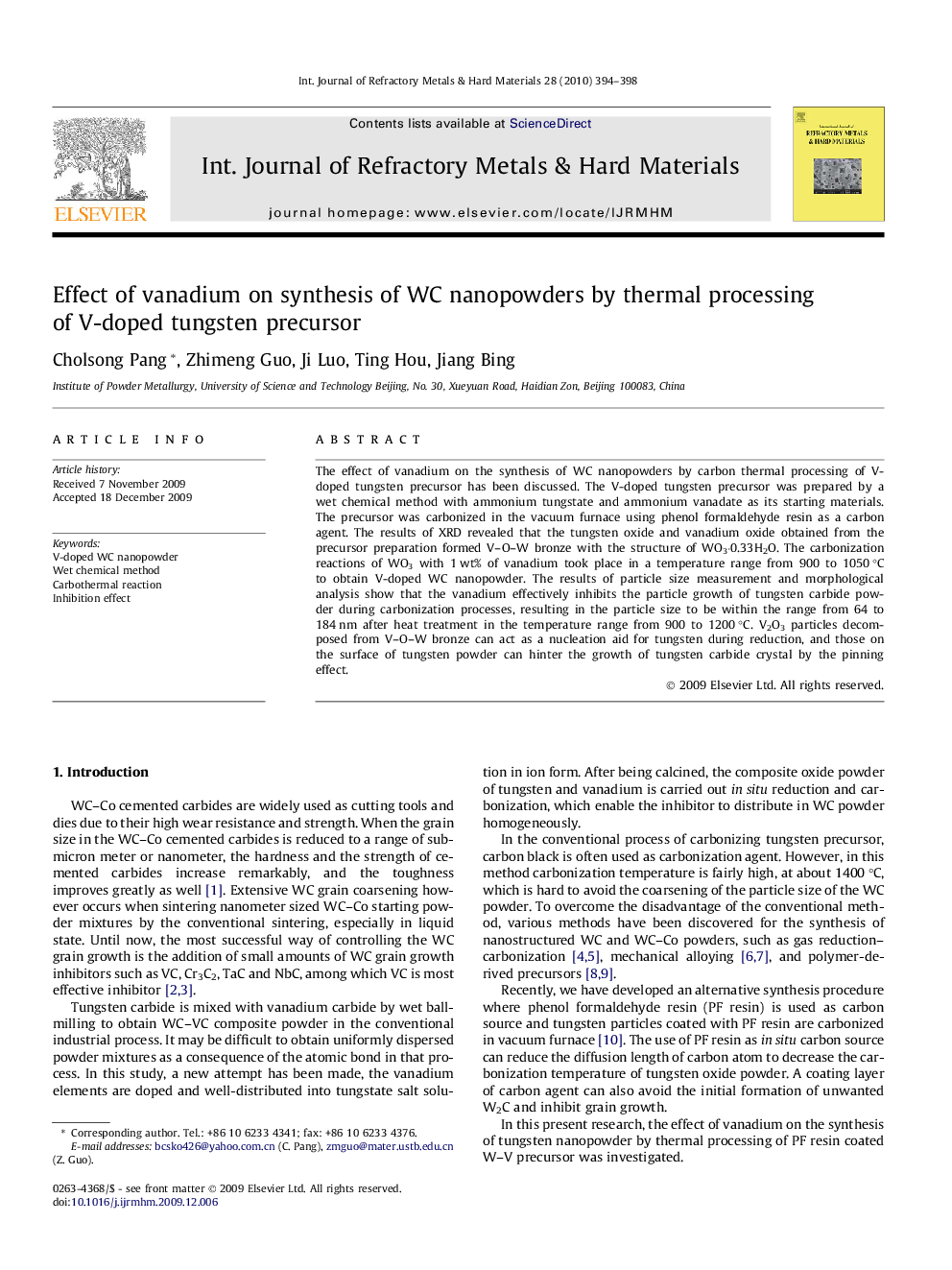| Article ID | Journal | Published Year | Pages | File Type |
|---|---|---|---|---|
| 1604117 | International Journal of Refractory Metals and Hard Materials | 2010 | 5 Pages |
The effect of vanadium on the synthesis of WC nanopowders by carbon thermal processing of V-doped tungsten precursor has been discussed. The V-doped tungsten precursor was prepared by a wet chemical method with ammonium tungstate and ammonium vanadate as its starting materials. The precursor was carbonized in the vacuum furnace using phenol formaldehyde resin as a carbon agent. The results of XRD revealed that the tungsten oxide and vanadium oxide obtained from the precursor preparation formed V–O–W bronze with the structure of WO3 · 0.33H2O. The carbonization reactions of WO3 with 1 wt% of vanadium took place in a temperature range from 900 to 1050 °C to obtain V-doped WC nanopowder. The results of particle size measurement and morphological analysis show that the vanadium effectively inhibits the particle growth of tungsten carbide powder during carbonization processes, resulting in the particle size to be within the range from 64 to 184 nm after heat treatment in the temperature range from 900 to 1200 °C. V2O3 particles decomposed from V–O–W bronze can act as a nucleation aid for tungsten during reduction, and those on the surface of tungsten powder can hinter the growth of tungsten carbide crystal by the pinning effect.
